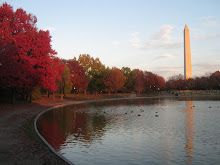
Hi everyone today we went to the Washita "battlefield". I'll explain why I put battlefield in parentheses when the time comes. Before going to the "battlefield" we went to the visitor's center. There we met rangers Kathryn, Joel, and Minoma, and Christal. Ranger Minoma is of Cheyenne blood and works there educating the public(which is fitting because the Cheyenne and Arapaho were the Native Americans in the"battle"). We sat in a "teepee" and learned what parts of the buffalo were used for what tasks. We learned about her family and their religious practices and connection to God. We then learned about how the American side treated their wounds. Back then if not much could be done for a limb injury they just amputated it. Other injuries for the most part simply required the removal of a weapon part i.e arrowheads, bullets, etc. Afterwards we saw some pictures of the primary doctors and some saws and probing knives. After being utterly disgusted we went back into the "teepee" and learned about the medicines the Cheyenne and Arapaho used in the "battle" and in general. Afterwards we learned that the warriors made their own shields. We saw an almost exact replica of Little Rock, the second in command chief(it wasn't exact because they didn't want to offend his spirit). We then made our own shields incorporating the four stages of life/primary races: white, the beginning of life and the white men, red, aging up and the Indian men,yellow, getting older and Asian men, and black, nearing the end of your life and black men. My shield has water on it which supports life and the sun which represents nurturing and growth. As we prepared to go to the "battlefield" we got stamps and stamped our "STAMPS" stamp with a new date. By now you're wondering why I keep saying "battlefield" and "battle". Well the American forces, led by General George A. Custer basically blindsided the Cheyenne and Arapaho. We saw prayer cloths tied to trees at the Washita River that Cheyenne and Arapaho people put there. What disturbed me most was tat they killed their horses which were considered a part of the family. I'm not done though, sadly. In the early 1900's someone took the horse bones and turned them into fertilizer. We hiked the trail and came back to the visitors center. The rangers thanked us for coming all the way from D.C. to see the park. My favorite part was hearing the events and stories from the perspective of someone who's family was affected by this horrific event. Tomorrow we're going to the Oklahoma City Memorial and Oklahoma University.



How did it feel to stand on the grounds were so many people lost their lives for nothing? I am glad that you got to hear first hand what happened and not read it in a book with a twist to it. People can be soo mean sometimes, and for what because others are not like them? or to own land? This was quite a learning experience and I can't wait to hear more from you when you get home. Did you get to keep your shield? I can't wait to see it!!!
ReplyDeleteWhat great detail from all of you. It makes you feel like you are there!
ReplyDeleteWhat a wonderful opportunity to have a guide with a personal understanding of the devastation of America's Expansion West and "Manifest Destiny." It should never be one culture's "manifest destiny" to destroy the cultures of other people.
ReplyDeleteSo do you think the park should be named "battlefield" or massacre site?
ReplyDelete